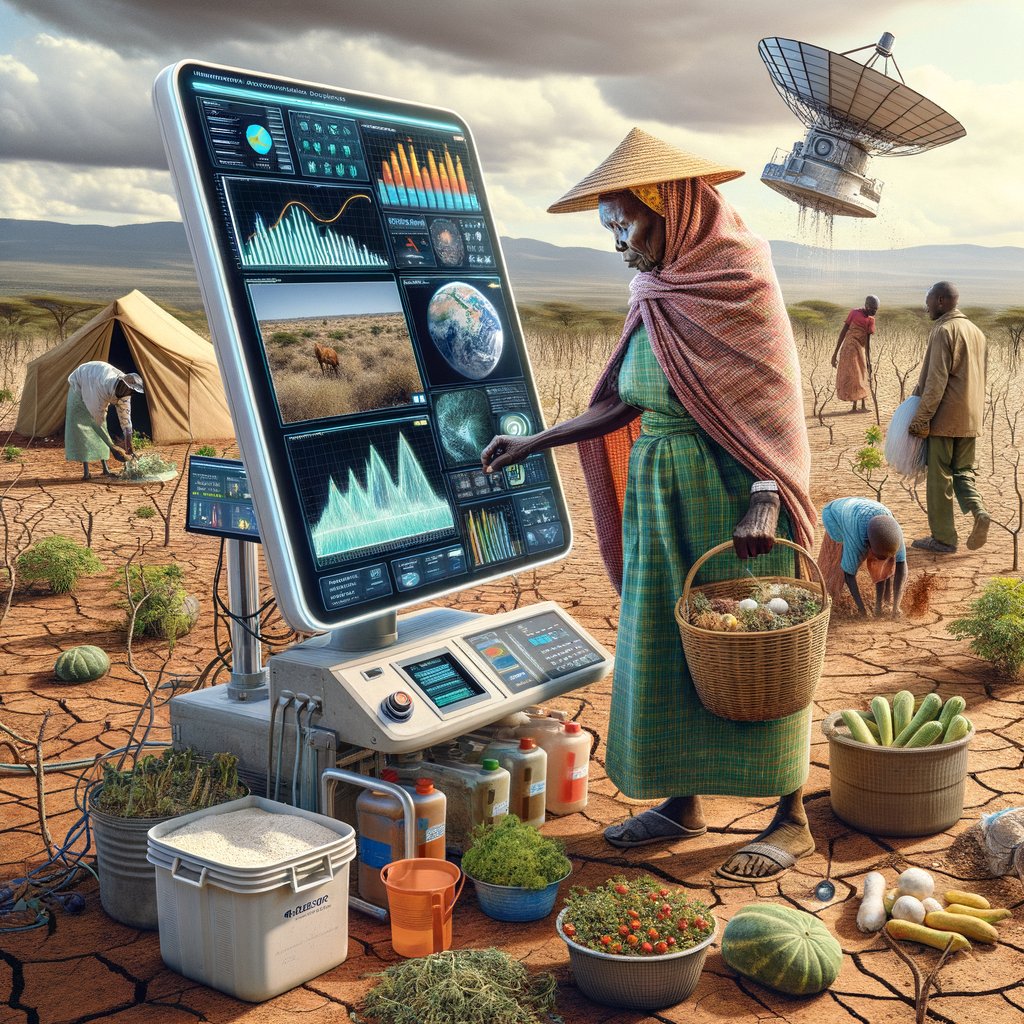Image created by AI
Revolutionary AI Tool to Combat Food Insecurity in Kenya
In the arid expanses of Kitui County, Kenya, where drought spells disaster for families like Esther Mulu's, a new technological development offers a glimmer of hope. Researchers from the University of California, supported by Microsoft, have created an innovative AI tool aimed at predicting and preventing food insecurity, a pressing issue that affects millions across Kenya.
Esther Mulu, aged 69, relies on her small farm to feed her extensive family which includes seven children and 25 grandchildren. The frequent crop failures due to unpredictable rainfalls have left them struggling, often reducing their meals to once-a-day porridge. The situation mirrors the struggles of many in the region, and indeed across various parts of Kenya.
The newly developed AI tool, utilizing a wealth of data including decade-long weather patterns, NASA satellite imagery of vegetation, and clinical health records, is designed to predict potential food shortages. This allows for preemptive action to prevent malnutrition, particularly in children under five - a demographic most vulnerable to the consequences of food insecurity.
The African Medical and Research Foundation (AMREF), which has been instrumental in running trials of this tool since February of the previous year, reports promising results. With the ability to predict food insecurity three to six months in advance, this tool could significantly change how resources are allocated and utilized in anticipation of food crises.
Samuel Mburu of AMREF highlights the tool's utility in enhancing resource mobilization and planning at the community level. By integrating local and clinical data sources, the tool can provide a more accurate and effective forecast, enabling targeted interventions. This proactive approach is complemented by support from local county officials, ensuring that resources such as food packs reach those in dire need, preventing malnutrition before it can take hold.
Despite these advancements, challenges remain, notably the costs associated with maintaining the AI system in cloud environments. However, initial funding and support from organizations like Microsoft have been vital in getting this project off the ground.
The development of such AI technology marks a significant step forward in the fight against food insecurity in Kenya. With ongoing improvements and the potential integration of more localized data, the impact of this tool could be substantial, offering a sustainable solution to a longstanding issue that can potentially save lives and improve living conditions in Kenya's most vulnerable communities.










